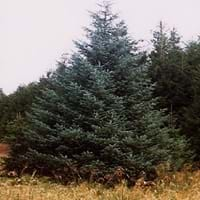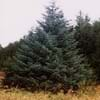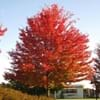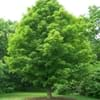Life Span
Perennial
Perennial
Origin
Eastern Asia
North America, United States, Northeastern United States, Mid-Atlantic United States, Southeastern United States, North-Central United States, Central United States, South-Central United States, Canada
Types
Black Spruce, Norway Spruce, Colorodo Spruce
Autumn Flame, October Brilliance, Tiliford
Number of Varieties
Not Available
Habitat
By seashore, Humid climates, Temperate Regions
Forests, Wide range of ecological site
USDA Hardiness Zone
6-8
3-9
Sunset Zone
A3, 2a, 2b, 3a, 3b, 4, 5, 6, 7, 8, 9, 10, 12, 14, 15, 16, 17, 18, 19, 20, 21, 22, 23, 24
A2, A3, 1a, 1b, 2a, 2b, 3a, 3b, 4, 5, 6, 7, 8, 9, 14, 15, 16, 17
Habit
Oval or Rounded
Oval or Rounded
Flower Color Modifier
Bicolor
Bicolor
Fruit Color
Red, Green
Red, Green, Brown
Leaf Color in Spring
Green, Light Green
Light Green
Leaf Color in Summer
Green
Green, Dark Green
Leaf Color in Fall
Red, Crimson
Yellow, Red, Orange, Yellow green, Gold, Dark Red, Orange Red
Leaf Color in Winter
Not Available
Not Available
Leaf Shape
Acicular
Maple shaped
Plant Season
Spring, Summer, Fall, Winter
Spring, Summer, Fall
Sunlight
Full Sun, Partial Sun, Partial shade
Full Sun, Partial Sun
Growth Rate
Medium
Medium
Type of Soil
Clay, Loam, Sand
Clay, Loam, Sand
The pH of Soil
Acidic, Neutral
Acidic, Neutral, Alkaline
Soil Drainage
Average
Average
Bloom Time
Early Spring, Spring, Late Spring, Early Summer
Early Spring, Spring
Tolerances
Heat Tolerance, Humidity, Light Frost
Wet Site, Soil Compaction
Where to Plant?
Ground
Ground
How to Plant?
Seedlings, Spores
Seedlings, Vegetative Reproduction
Plant Maintenance
Medium
Medium
Watering Requirements
Needs less watering
Water Deeply, Water when top layer of soil becomes dry
In Summer
Lots of watering
Lots of watering
In Spring
Moderate
Moderate
In Winter
Average Water
Average Water
Soil pH
Acidic, Neutral
Acidic, Neutral, Alkaline
Soil Type
Clay, Loam, Sand
Clay, Loam, Sand
Soil Drainage Capacity
Average
Average
Sun Exposure
Full Sun, Partial Sun, Partial shade
Full Sun, Partial Sun
Pruning
Prune when young, Remove dead branches
Remove dead branches, Remove dead leaves
Fertilizers
slow-release fertilizers
General garden fertilizer, No need to fertilize every year
Pests and Diseases
Aphids, Birds, Snails
Anthracnose, Bleeding canker, Decline, Fomes root rot, Ganoderma root rot, Laetiporus root rot, Leaf spot, Powdery mildew, Tar spot, Verticillium Wilt
Plant Tolerance
Heat Tolerance, Humidity, Light Frost
Soil Compaction, Wet Site
Flowers
Insignificant
Insignificant
Flower Petal Number
Single
Single
Foliage Texture
Fine
Medium
Foliage Sheen
Matte
Matte
Attracts
Ants, Fruit Bats, Snails, Squirrels
Not Available
Allergy
Constipation, Diarrhea, Dizziness, Sore eyes
breathing problems, Eczema, flushing of face, Hives, Low blood pressure, Oral cavity, Rapid Heartbeat, Runny nose, Watery eyes
Aesthetic Uses
Showy Purposes
Showy Purposes
Beauty Benefits
For treating wrinkles, Making cosmetics, Speed hair growth
Not Available
Edible Uses
Sometimes
Yes
Environmental Uses
Agroforestry, Air purification, Nesting sites for birds, soil stabilisation
Air purification, Wildlife
Medicinal Uses
anti-inflammatory, Back pain, Emollient, Immunity, Obesity
Not Available
Part of Plant Used
Leaf Stalks, Root
Whole plant
Other Uses
Constructing Boats, Making piano frames, Used as fuel, Used in Furniture, Used in making musical instruments, Used in paper industry, Used in pencil industry
Edible syrup, Used as Ornamental plant
Used As Indoor Plant
No
Yes
Used As Outdoor Plant
Yes
Yes
Garden Design
Container, Feature Plant, Mixed Border, Topiary / Bonsai / Espalier
Feature Plant, Shade Trees, Street Trees
Botanical Name
ACER palmatum 'Osakazuki'
ACER rubrum
Common Name
Japanese Maple, Osakasuki Japanese Maple
Northern Red Maple, Red Maple
In Hindi
सरल
लाल मेपल के पेड़
In German
Fichten
Red Maple Tree
In French
Picea
Red Maple Tree
In Spanish
Picea
Árbol de arce rojo
In Greek
Spruce
Red Maple Tree
In Portuguese
Picea
Árvore de bordo vermelho
In Polish
Świerk
Red Maple Tree
In Latin
Picea
Rubrum Maple ligno
Phylum
Pinophyta
Magnoliophyta
Class
Pinopsida
Magnoliopsida
Family
Aceraceae
Aceraceae
Clade
Not Available
Angiosperms, Eudicots, Rosids
Tribe
Not Available
Not Available
Subfamily
Piceoideae
Not Available
Number of Species
Not Available
Season and Care of Sitka Spruce and Red Maple Tree
Season and care of Sitka Spruce and Red Maple Tree is important to know. While considering everything about Sitka Spruce and Red Maple Tree Care, growing season is an essential factor. Sitka Spruce season is Spring, Summer, Fall and Winter and Red Maple Tree season is Spring, Summer, Fall and Winter. The type of soil for Sitka Spruce is Clay, Loam, Sand and for Red Maple Tree is Clay, Loam, Sand while the PH of soil for Sitka Spruce is Acidic, Neutral and for Red Maple Tree is Acidic, Neutral, Alkaline.
Sitka Spruce and Red Maple Tree Physical Information
Sitka Spruce and Red Maple Tree physical information is very important for comparison. Sitka Spruce height is 460.00 cm and width 460.00 cm whereas Red Maple Tree height is 1,220.00 cm and width 1,220.00 cm. The color specification of Sitka Spruce and Red Maple Tree are as follows:
Sitka Spruce flower color: Red
Sitka Spruce leaf color: Green and Light Green
Red Maple Tree flower color: Red
- Red Maple Tree leaf color: Light Green
Care of Sitka Spruce and Red Maple Tree
Care of Sitka Spruce and Red Maple Tree include pruning, fertilizers, watering etc. Sitka Spruce pruning is done Prune when young and Remove dead branches and Red Maple Tree pruning is done Remove dead branches and Remove dead leaves. In summer Sitka Spruce needs Lots of watering and in winter, it needs Average Water. Whereas, in summer Red Maple Tree needs Lots of watering and in winter, it needs Average Water.





